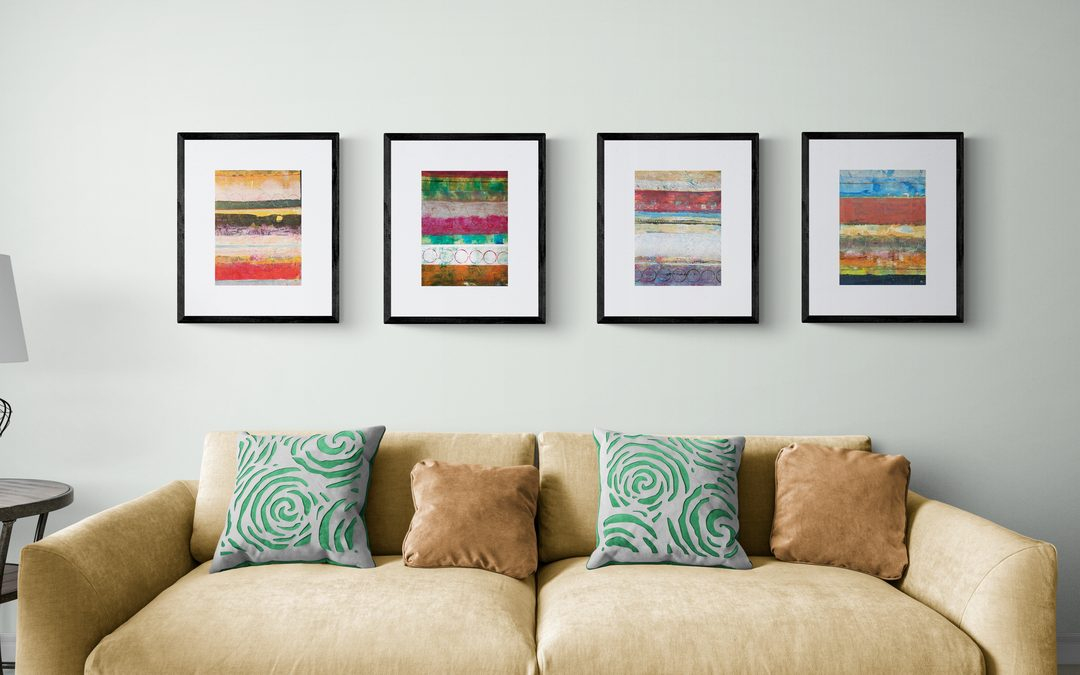
What is a Giclee Print?
So what is a Giclée print and how does that differ from an art poster or art print?
A Giclée print is a high-quality reproduction of an original artwork, created using professional inkjet printers. The term “Giclée” (pronounced zhee-clay) comes from the French word meaning “to spray” or “to squirt,” referring to the way in which ink is applied onto the printing surface. Posters or ”art prints” can be much cheaper than Giclée because lower quality materials and equipment are used in production. (eg Dye based inkjet printers, laser printers, fewer ink colours, lesser quality papers, etc.)
Here are some key characteristics of high quality professional Giclée prints:
- High-Quality Printing: Giclée printing utilizes specialized inkjet printers and archival-quality pigment inks to produce prints with exceptional detail, colour accuracy, and longevity. These printers use as many as 8-12 different ink colours, in addition to multiple blacks and grays, compared to consumer/business inkjet printers which generally only have 3 colours plus black. These printers can achieve a wide range of colours and reproduce fine details with precision, resulting in prints that closely resemble the original artwork.
- Archival Materials: Giclée prints are printed on archival-quality paper or canvas, which is specifically designed to resist fading and deterioration over time. This ensures that the prints remain vibrant and stable for many years, often with a lifespan of over 100 or even 200 years when properly cared for. Both Canvas and Paper may be used for Giclée prints. In the case of my prints, I prefer using Hahnemühle papers, which are extremely high quality and recognized as industry leaders.
- Limited Editions: Some artists and printmakers produce Giclée prints in limited editions, with each print individually numbered and signed by the artist. This adds value and exclusivity to the prints, making them desirable for collectors. However producing open editions allows the artist to keep the price a bit lower, and therefore within reach of those who may not be able to afford original art or limited editions. This is purely a matter of choice by the artist. At this date all my Giclée prints are Open edition prints. I may do limited editions in the future – deciding whether or not to do this is complex, and involves, among other things, the price that I charge for my original art compared to prints.
- Versatility: Giclée printing can be used to reproduce a wide variety of artworks, including paintings, drawings, photographs, and digital art. The flexibility of the printing process allows artists to create prints in various sizes and formats, catering to different preferences and display options.
- Cost-Effective Reproduction: Giclée printing offers a cost-effective way for artists to reproduce their artwork in small quantities without the need for traditional printing plates or setup costs. This makes it accessible to artists who wish to offer affordable prints of their work to a wider audience.
Overall, Giclée printing has become a popular choice for artists, galleries, and collectors seeking high-quality reproductions of original artwork. It combines the precision and versatility of inkjet printing technology with the archival quality of materials, resulting in prints that faithfully capture the beauty and detail of the original artwork.
Make sure you know what you are buying when looking for art prints. If you are looking for some inexpensive decor – then poster prints may be the way to go. They are inexpensive to print and fun – but they won’t last long and may not accurately reproduce the original artwork. If you are interested in investing in archival art prints that will stand the test of time and beautify your home for many years, Giclée prints made with pigment inks on archival papers are your best choice. Ask the artist about the papers and inks, what choices they have made, where they were printed, and whether or not materials they are presented in are archival quality. Not all inkjet prints can be considered Giclée – if dye based inks are used for printing, this is not a “true” Giclée.
As a side note, all of my Giclée prints which you’ll find on this website are printed in studio, by me. I sign each one individually. My printer is an Epson 3880 which is equipped with 9 high quality pigment inks. I mainly use Hahnemühle papers, particularly the German Etching paper or Photo Rag, both of which have a wonderful textural quality and matte finish. If I’m printing something that I feel needs a bit more lustre, I turn to Ilford Smooth Pearl or Gold Fibre Silk – both are wonderful papers that show a beautiful depth of colour with a slight lustre. All of the inks and papers I use have been tested and proven to be of archival quality by Wilhelm Research – considered the authority on inkjet paper / ink testing.
